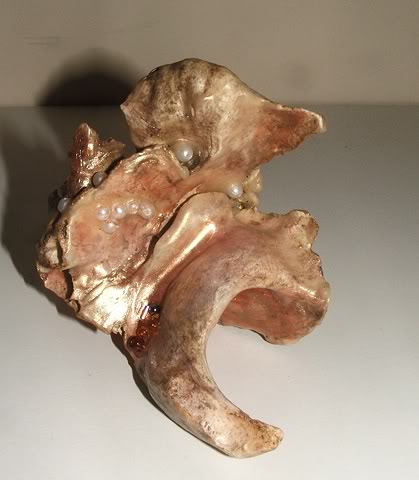b
Emily Kaelin
Emily Kaelin is a young artist who deals with the theme of repulsion versus beauty, in installations, mixed-media art, and paintings, mimicking human organic materials that are generally thought to be disgusting, such as flesh, hair, blood, and bone, and creating pieces that are conflicting, visceral, and boundary-pushing. She describes her own art in these words: “push and pull of appealing and repellent, comforting and upsetting, lovely and ugly; inability to look at or render self objectively; impulse and intuition and instinct; emotionality; flesh; hairiness.”
Her artwork constantly intersects the descriptors of ugly, strangely beautiful, alluring, repulsive, bizarre, off-putting, intriguing, fleshy, raw, delicate, and otherworldly. It expresses agony incarnate in the body, in its materials of ink and parchment (blood and skin).
